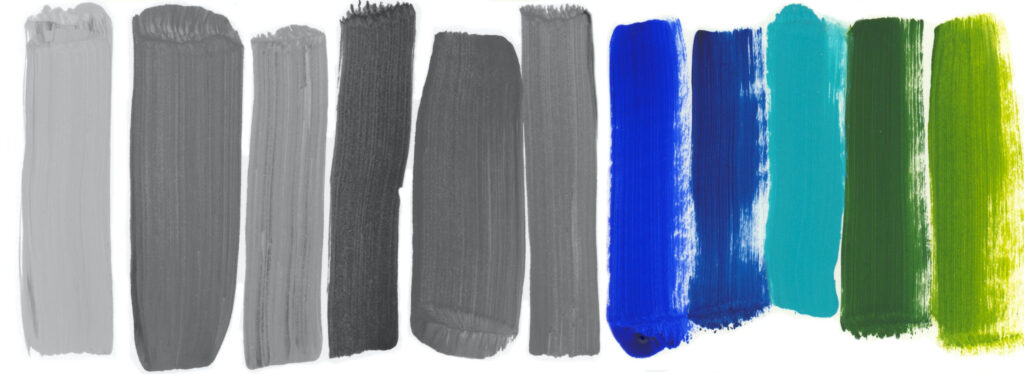
Gray – boring, blah, rainy gray. That’s what my mind conjures at the mention of that color. Black + white. Coming from this sun-loving lady, you’d think I avoided gray at all cost. In real life I definitely chase the sun, but without a little gray in your life, your paintings will be too bright and oversaturated, resulting in a headache for the viewer.
We learn in elementary school that gray is what you get when you mix black and white. In the world of color, gray takes on an even bigger meaning, giving us even more than the 50 shades that are now infamous.

Gray belongs to a color family we refer to as neutrals.
The function of neutrals vary from painting to painting and can be used as much or as little as you prefer. I prefer pops of vivid, bold colors, so I use neutrals next to my bold colors to help them pop. If you’re an artist who uses a less saturated palette, gray probably plays a larger role in your work.
Another use for gray paint is to tone your canvas or palette, laying down a quick, gray or colored background. Starting with a white canvas, paper, or board makes it difficult to interpret colors correctly. A neutral background like gray helps your eyes to see and compare color better.
Now that you see its value (pun intended) are you ready to mix some gray?
As we mentioned before, it starts with black, but we want our black and gray to have personality so we never use black paint from the tube. Instead. we start with some colors to make a black color that has more personality than its pre-made counterpart. Learn how to mix black here:
Myself, being a novice, I really enjoy your videos! Gets me trying different approaches to painting! Thank you!